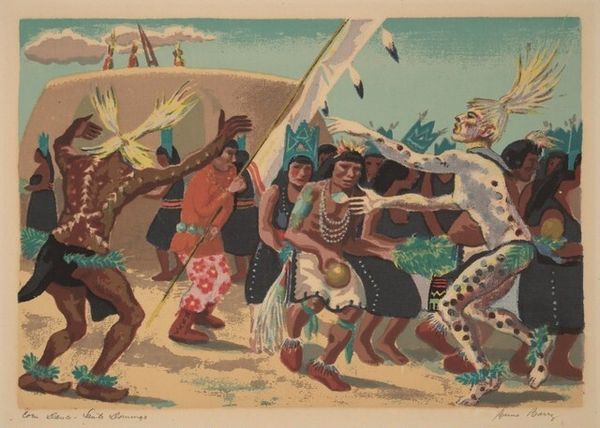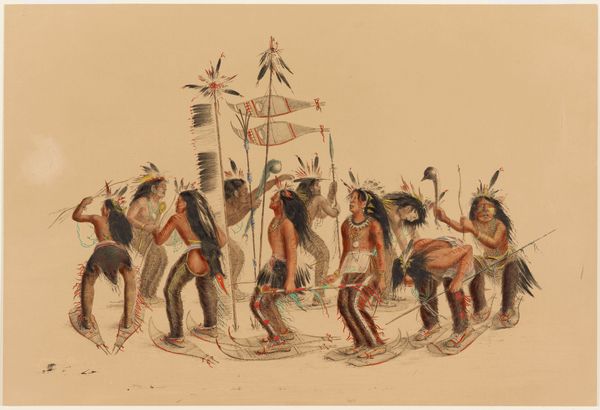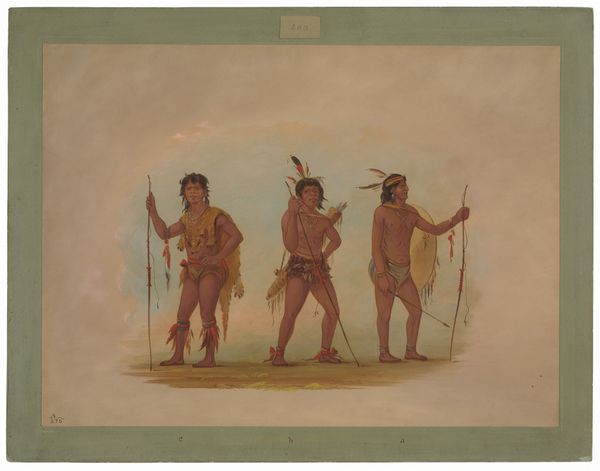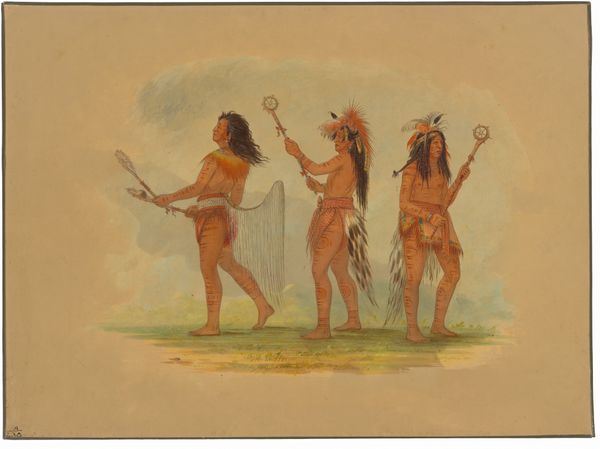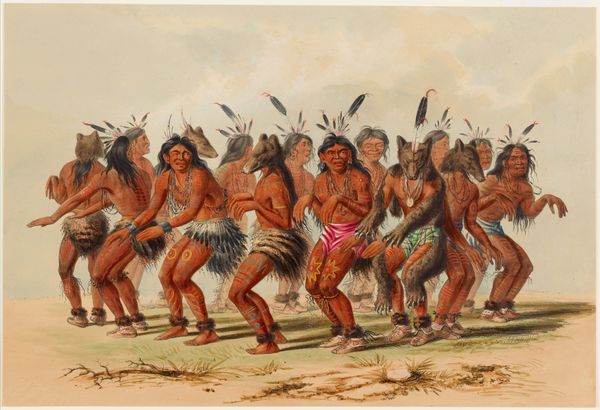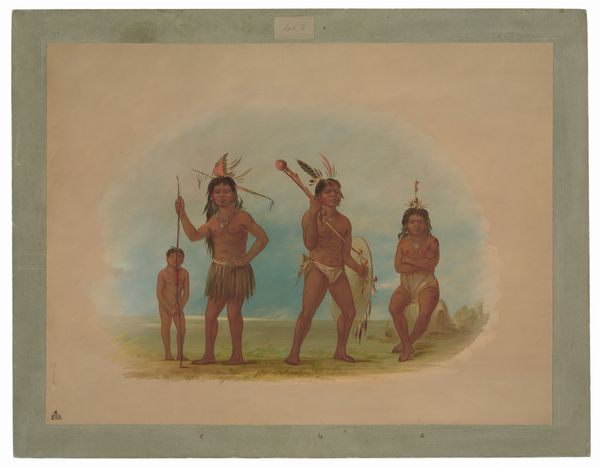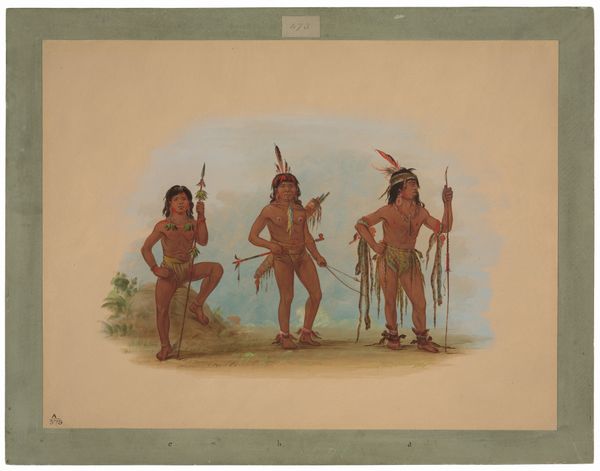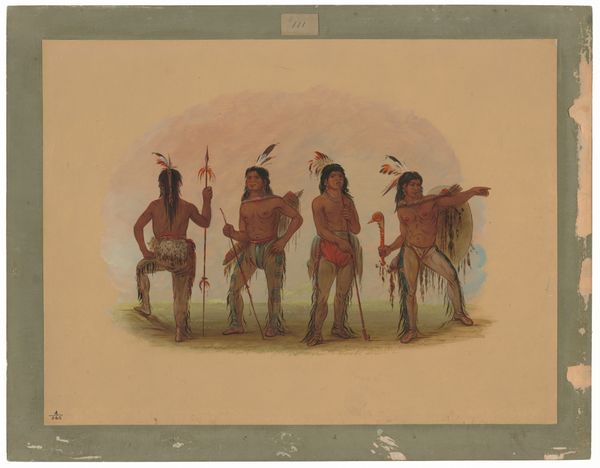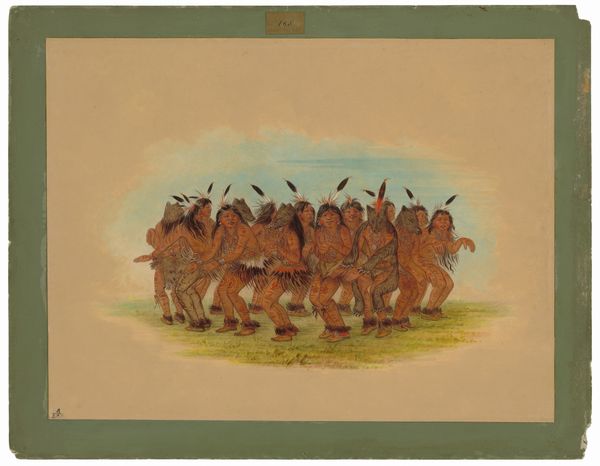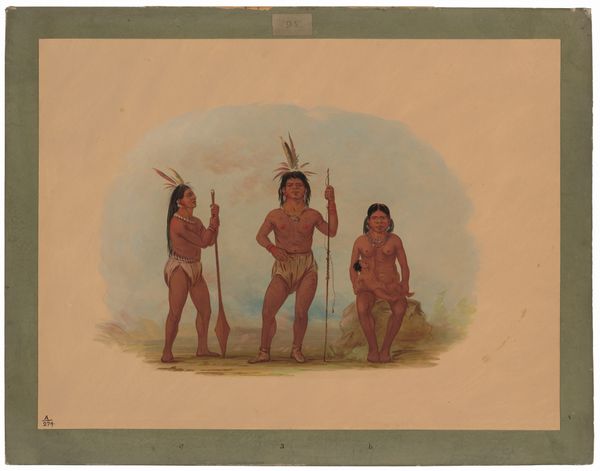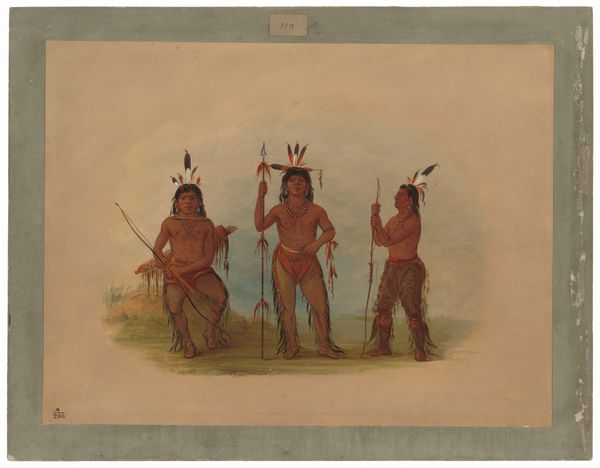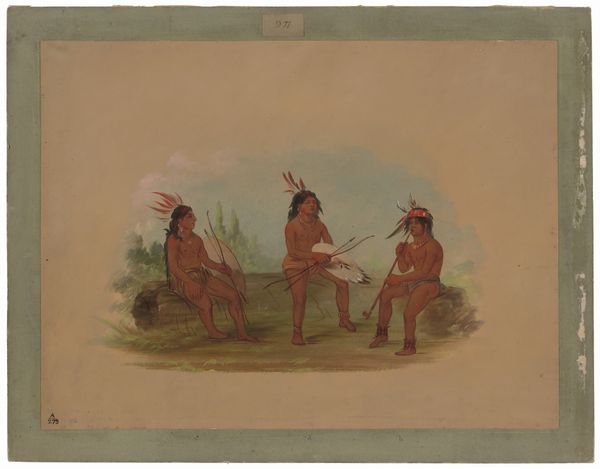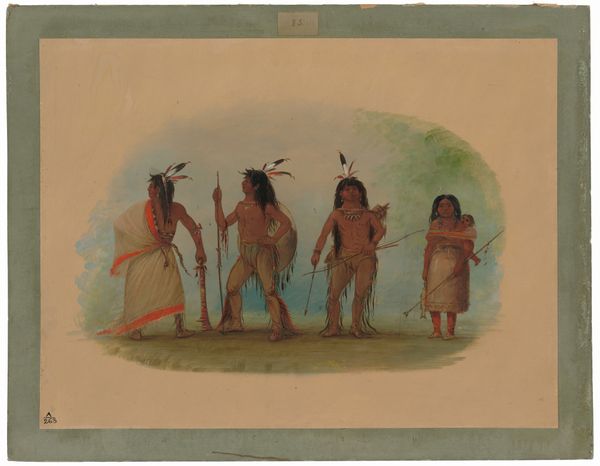
print, linocut
#
water colours
#
narrative-art
# print
#
linocut
#
figuration
Dimensions: Sheet:152 x 216mm Image:128 x 182mm
Copyright: National Gallery of Art: CC0 1.0
Curator: Here we have Anna Barry’s "Horsetail Dance" created in 1946. Barry used watercolors to bring this depiction to life. What strikes you first about this work? Editor: The figures in motion. There’s a sense of community and celebration, with the firelight playing against their skin and costumes. There’s an undeniable energy in the composition. Curator: Indeed. Barry's artistic contributions include a significant amount of illustrations portraying different Native American tribes during the 20th Century. "Horsetail Dance," falls into that area. It reflects broader narratives surrounding Indigenous cultures, but we need to view this imagery carefully to understand the context of how these artworks circulated in her own moment. Editor: Right. How did representations of indigenous people, made by non-indigenous artists like Barry, affect policy or perception, say, in mid-century America? The romanticization, the potential misrepresentation - what work did that imagery do in the culture? Curator: Examining the history behind those perceptions gives context. Museums, cultural institutions—they played a role in promoting particular narratives that need scrutiny. Even a piece intended to be celebratory, or representational needs critical analysis regarding authorship, agency and intent. What can a seemingly straightforward, yet potentially loaded, artistic rendition reveal about power structures? Editor: The costumes, for example, how were they viewed or exoticized, and did they truly honor or, instead, reinforce stereotypes? It reminds us to constantly examine our gaze. As we appreciate the skill and technique on display in a piece like “Horsetail Dance” can we also ask tough questions of the artwork, the artist, and even ourselves? Curator: Absolutely, and recognizing how an artwork fits within its socio-historical context deepens our understanding beyond the purely aesthetic. We gain insight on how representations of cultural rituals are perceived and projected, rather than seeing the realities that reflect back those portrayals within Native American society. Editor: Thinking about it through this intersectional lens has deepened my appreciation but has certainly challenged my perspective as well, providing for some necessary uncomfortable but clarifying dialogue. Curator: For me as well. Bringing attention to pieces such as this demands conversation regarding the narratives and realities portrayed.
Comments
No comments
Be the first to comment and join the conversation on the ultimate creative platform.
